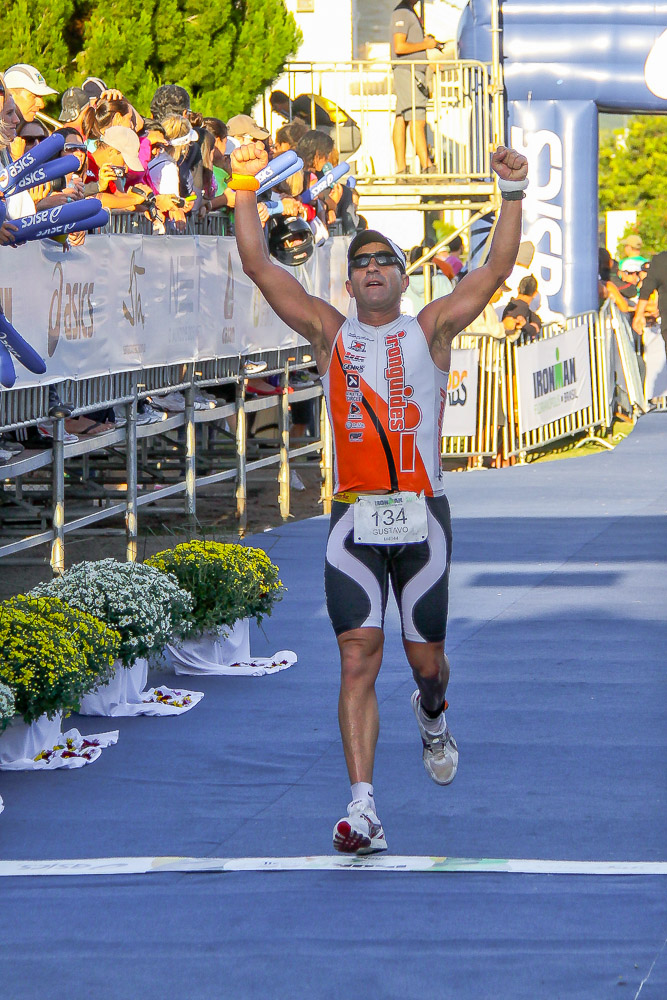As we head full on into race season, tapering is the topic on everyone’s mind. Should we taper for every race, how do we recover from the race, and how do we get back to productive training as soon as possible. The process of tapering I have talked about in previous articles. What I want to talk about here is the process of training through smaller, less important races that we use as stepping stones to our BIG races.
We can only really go through a full taper process 2 or 3 times per season without losing fitness—these tapers should ideally be a month or more apart.
For smaller races we do not maintain our full training schedule right up to the race either. Instead we have a mini refresh before the race and train as normal immediately following the race, essentially treating the event as an important training session.
RACE REFRESH
As we head through a training program at ironguides, we have our athletes training with a certain level of fatigue. This fatigue is an insurance policy against going too hard—it allows really good consistent training without the risk of going too hard as the body is too tired to do so!
When we have a small race coming up and we are in full training, the idea is to allow the body to freshen up without dropping all the fatigue and to not allow the body to change its hormonal state to one of deep recovery. With this, you are never going to be fully race sharp but you will be surprised at what you can do on a little fatigue.
I also use this to show athletes how hard they can push their bodies—tired body will not give you that top 5% speed but without that level you can’t blow up so you can really hammer away at your limit without fear of crawling home. This race suffering is a great lesson to take to your main races.
So how do we go about that freshening up?
I like to take the 3 days heading into the race as freshen-up time; any longer and we lose the training pattern and risk the body shutting down and going into deep recovery.
DAY 1: 3 days before the race
This is your day off, but I prefer it to be an active recovery day with just 1 training session, which is best done in a non-weight bearing sport so either swim or bike. The session should be all easy and 40 minutes is the maximum you should do. Listen to your body and just enjoy your training. I personally love to choose a route I know to be around 30 minutes and to not take a watch; BE FREE and feel your body. If you feel like a little more then go for it and if you feel terrible do not push through.
TRAINING
* easy 40-minute swim or bike
DAY 2 – 2 days before the race
This is an easy aerobic day, training the same hours as normal but the intensity is lower. This maintains fuel burning as normal within the body. This day would normally include a short run and a longer bike. The run would include a short period or set of moderate-pace intervals, while the bike includes a few 10 second ALL OUT sprints to make sure all muscle fibres are activated and kept in motion for the race. During a period of heavy training these 10-second sprints can really refresh the muscles very quickly—at the end of 10 seconds you get a short but intense burn throughout the muscles and this is exactly what is needed to produce a short secretion of growth hormone into the body to accelerate recovery.
TRAINING
* RUN – 30 minutes with 10 minutes of moderate pace intervals
* BIKE – 60-90 minutes easy with some 10-second sprints
DAY 3 – 1 day before the race
This is a short training day where we touch on all systems, so a little strength, a little speed and a little tolerance work. It is always good to do a little swim on this day and I prefer the bike also as it’s non-weight bearing and allows for faster recovery than a run session.
TRAINING
* SWIM – 20 minutes with some short accelerations to above race speed.
* BIKE – 40 minutes ride with some short all-out intervals and some moderate-paced strength intervals on a climb if possible.
RACE DAY
As we are still going to be a little fatigued heading into the race, a good warm-up is essential. This does not need to be fast but, just as in training, sometimes we need 20-30 minutes for the body to wake up, you should also be prepared to not feel great for the first part of the race, just keep positive and keep faith in the fact your body will come around.
POST-RACE RECOVERY
This is the important part to maintain consistent training; it is essential you do not stop as soon as you cross the finish line. It’s always tempting, but think that you would never do this after a hard session. Keep mobile, walk around a little or a small bike/ jog as you would after any hard session—remember, you have to think of the race as just a hard training session.
The next day you are right back into your training plan as though you had done a hard session, not a race. This style of training is the reason pro athletes can maintain such good shape all year despite racing almost every weekend; they do not taper for each race and they are straight back into training following the events.
Most ITU athletes will race Sunday, wake up sometimes crazy early on Monday morning to run before traveling home or to the next race. Running at airports etc is all part of the lifestyle to not allow the body to go into rest mode and then on Tuesday it’s back to the hard work. Typically these athletes are back to track intervals on Tuesday, training through the fatigue!
Alun “Woody” Woodward, Certified ironguides Coach – Europe
* * * Your best is our business.™ * * *
ironguides is the leading Lifestyle Facilitation company for athletes of all abilities. We provide coaching and training services, plans and programs, as well training education, health and fitness products to help you learn and live a healthy lifestyle. Come get fit with one of our monthly training subscriptions, event-specific training plans, coaching services, or a triathlon training camp in an exotic location! ironguides also provides Corporate Health services including Corporate Triathlons, Healthy Living retreats and speaking engagements. At ironguides, your best is our business!
–
Train with ironguides!
Personalized Online Coaching: Starting at USD190/month
Monthly Training plans (for all levels, or focused on one discipline): Only USD39/months
Event based training plans:
Sprint Distance (USD45 for 8-week plan)
Olympic Distance (USD65 for 12 week plan)
Half Ironman (R$95 for 16-week plan)
Ironman (USD145 for 20-week plan)
X-Terra (USD65 for 12-week plan)
Running Plans (10k, 21k and 42k – starting at USD40)









 Alun ‘Woody’ Woodward, Certified ironguides Coach – UK/Hungary
Alun ‘Woody’ Woodward, Certified ironguides Coach – UK/Hungary


Recent Comments